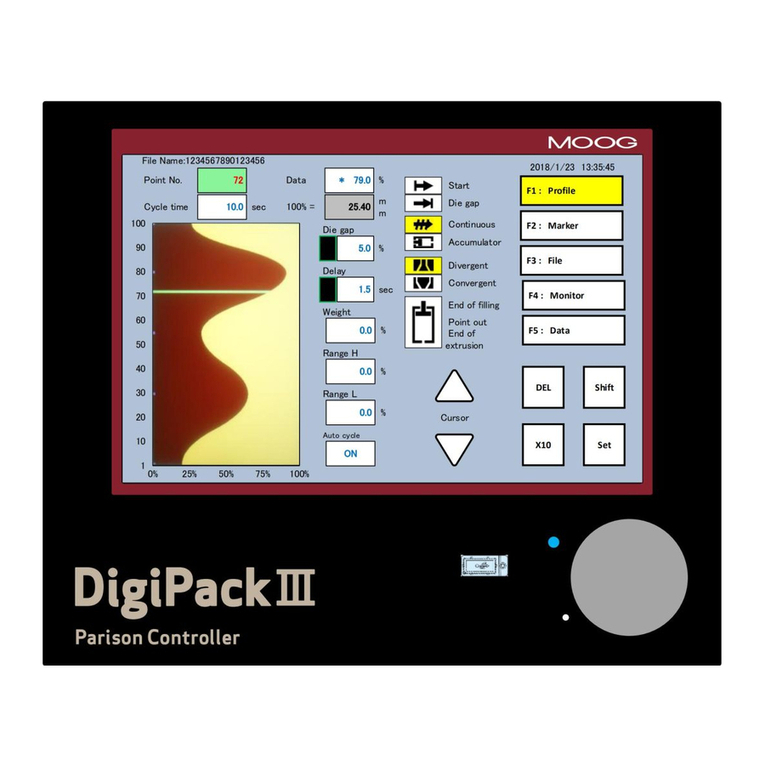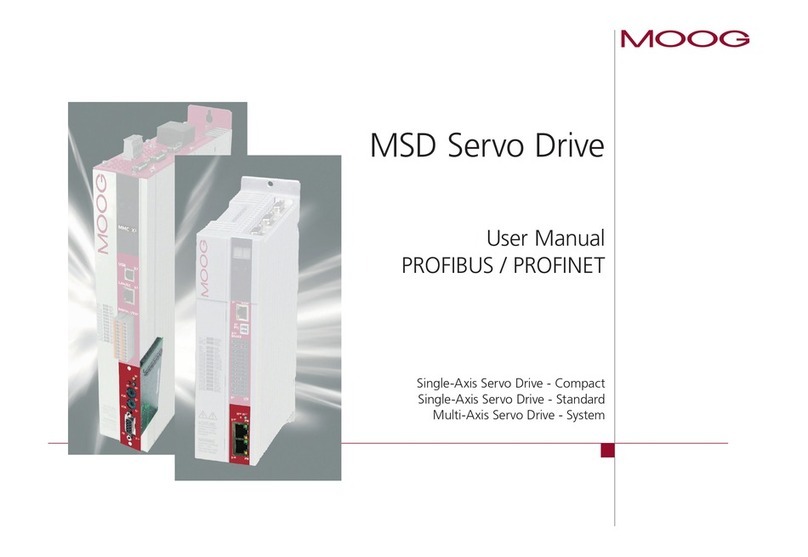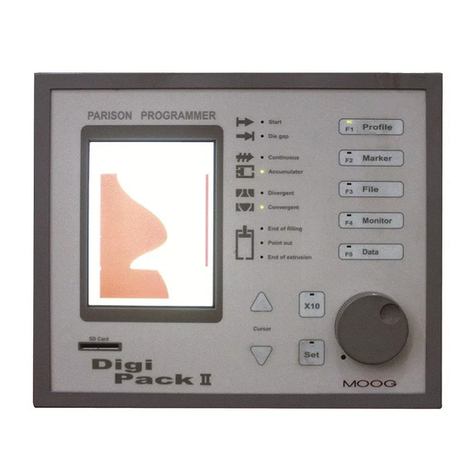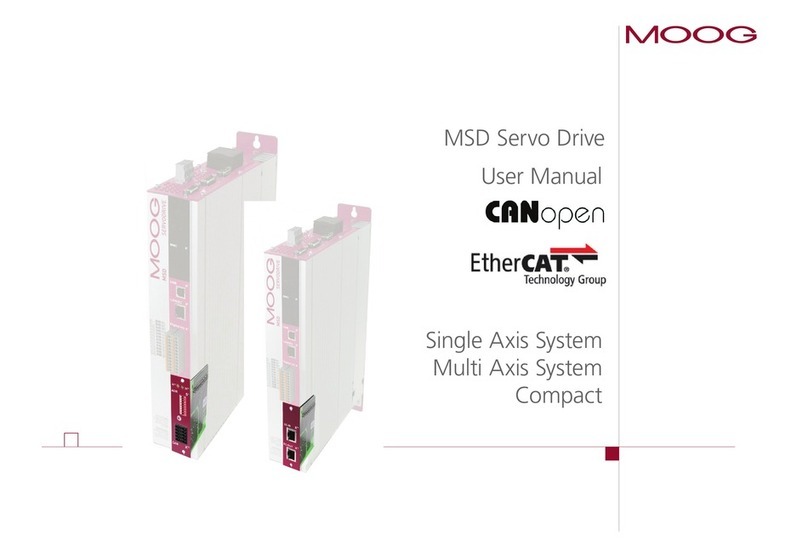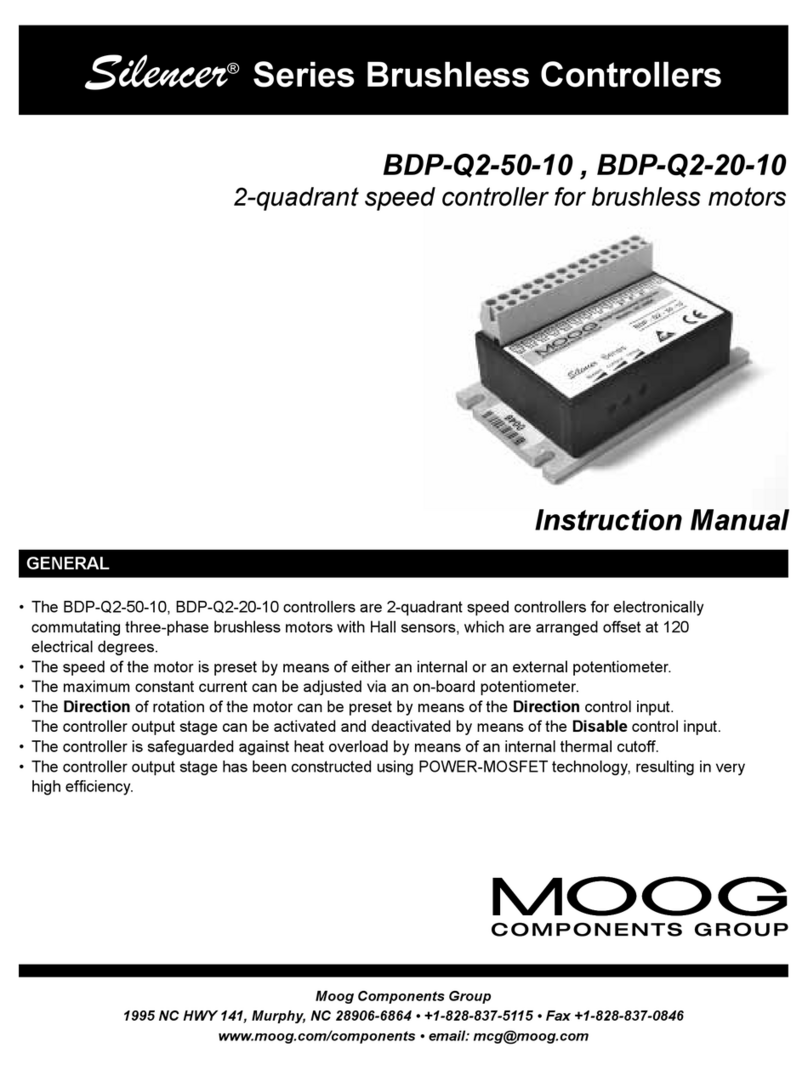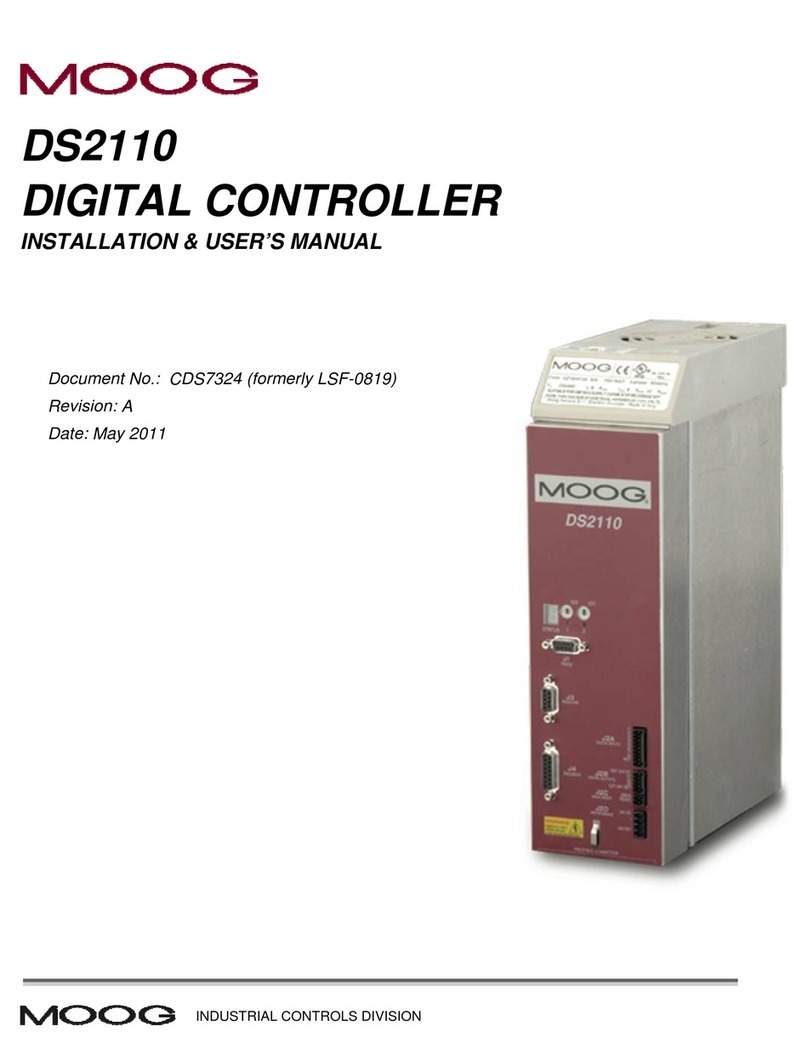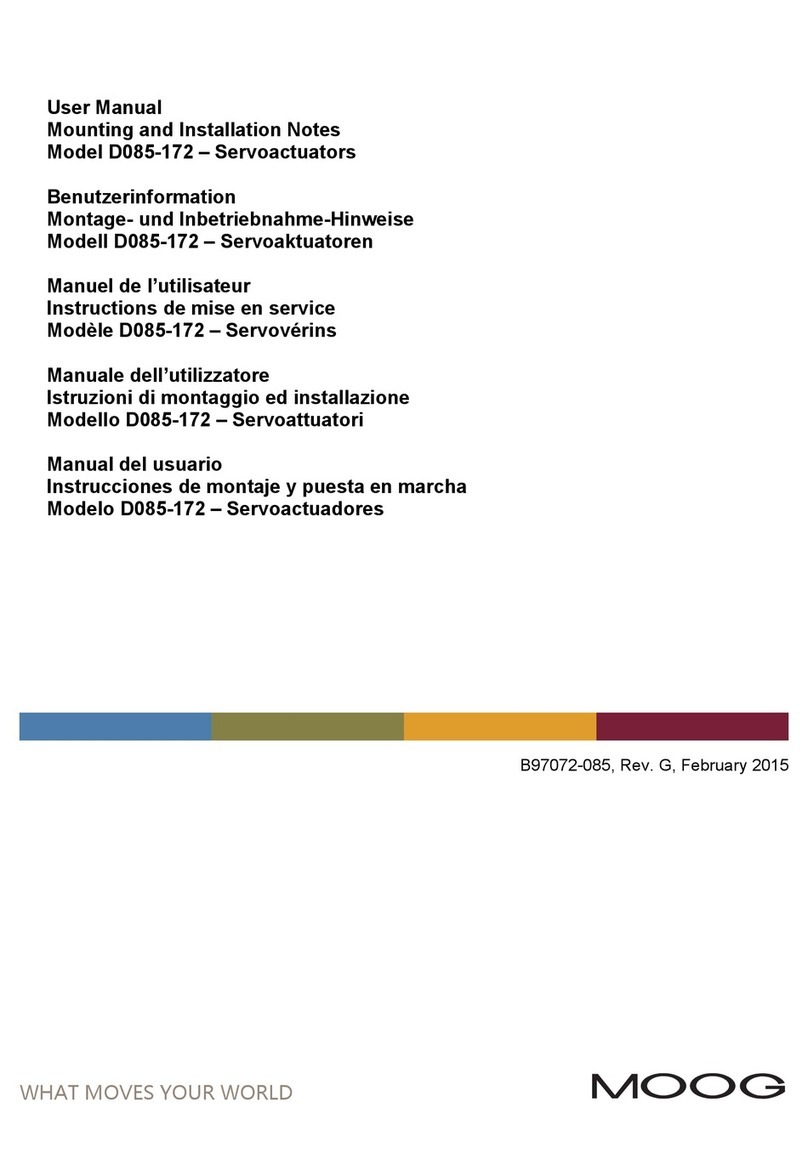
PARISON CONTROLLER moog
4MAN145-UM-D01A-EN Moog Italiana srl - Bergamo
1.2 Hydraulic Installation.
Hydraulic installation involves the mounting and plumbing of filters, servo-valve manifolds, cylinders, etc.
If the programmer is being installed as a replacement for another programmer all the necessary components should
already be in place. If not, the following suggestions are offered:
Do not reuse old hose, pipe fittings or tubing. Contamination in old plumbing is almost impossible to
effectively remove and can cause problems in future servo-valve reliability. Old fittings that have been
painted and assembled with old thread sealing compounds will not only introduce contamination, but are
harder to work with and can contribute to added installation time.
Before assembling any new plumbing, inspect it carefully to insure that there are no metal filings or foreign
matter left over from cutting or assembly. Now is the best time to clean it out, before it can get into the
hydraulic system.
Replace the hydraulic oil or have it analyzed by a reputable lab. Depending on your maintenance program,
the oil may not have been checked for some time. Now is a good time to perform any oil-related
maintenance BEFORE the servo-valves are installed.
If you are replacing the oil remember to filter it as you pump it into the machine. New oil right from the
refinery is sometimes the dirtiest oil in the shop.
1.3 Hydraulic Filtration.
Clean oil is the key to reliable hydraulic system operation. Dirt, silt and sludge in the system increase operating
temperatures by decreasing heat exchanger efficiency and create excessive wear on pumps, directional and relief
valves and valve seats. Contamination breeds contamination by wearing hoses and other hydraulic components
from the inside.
Moog servo-valves are designed to operate with an ISO code of 14/11. While this may be lower than what you are
accustomed to, the benefits of improved filtration will show up not only in increased servo-valve life but will help to
reduce premature machine wear and the frequency of oil related failures.
Moog offer a full line of filters and filter systems with element ratings starting at 3 microns, flow-rates from 10 to
100 gallons per minute, and operating pressures as high as 3,000 psi. There are a number of good filter systems
available and, even if a Moog filter is not chosen, it is strongly urged you employ one of these other filter systems
on your machine.
High-pressure filter assemblies should be plumbed between the high-pressure hydraulic supply and the “P”
(pressure) port of the servo-valve manifold(s). Plumbing from the filter outlet to the “P” port should be completed
with steel tubing or pipe.
If the machine employs a hydraulic accumulator to maintain stability in the machine’s hydraulic system, the filter
should be installed after the accumulator and before the valve manifold(s).
1.4 Servovalve Manifolds.
Servo-valve mounting is accomplished with the use of manifolds for each head. These manifolds allow for easy
removal of the valves to facilitate system flushing or valve replacement in the event of failure.
